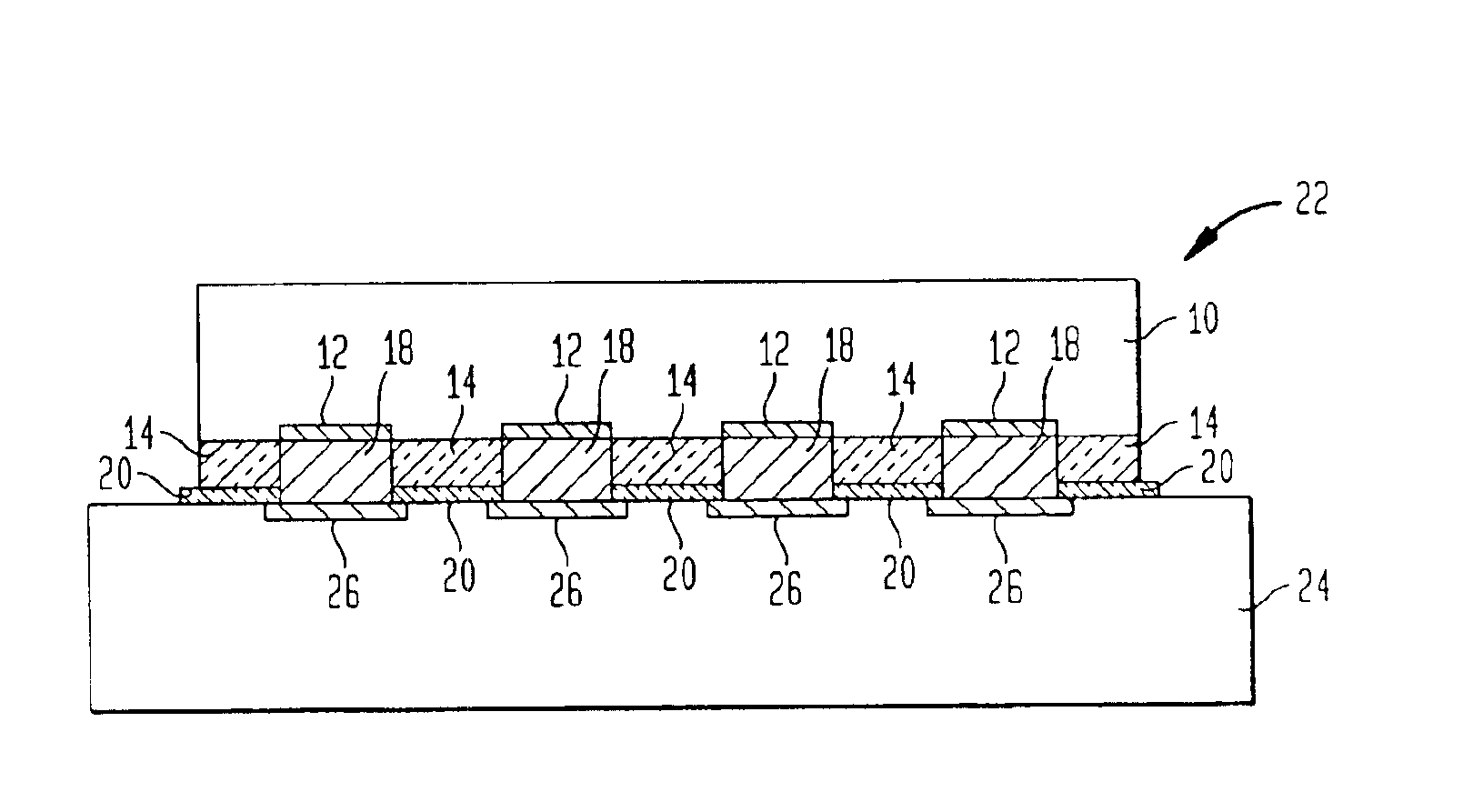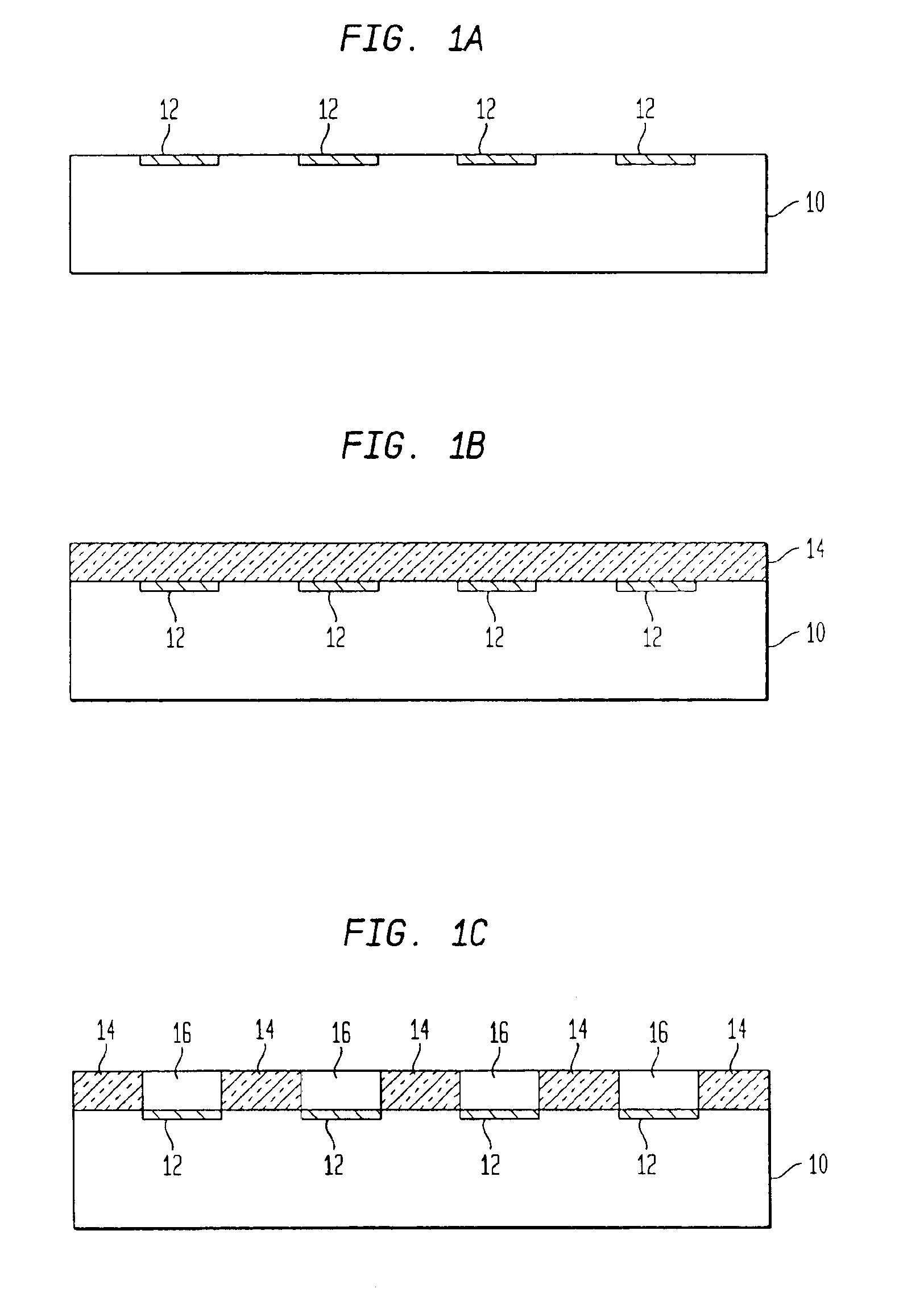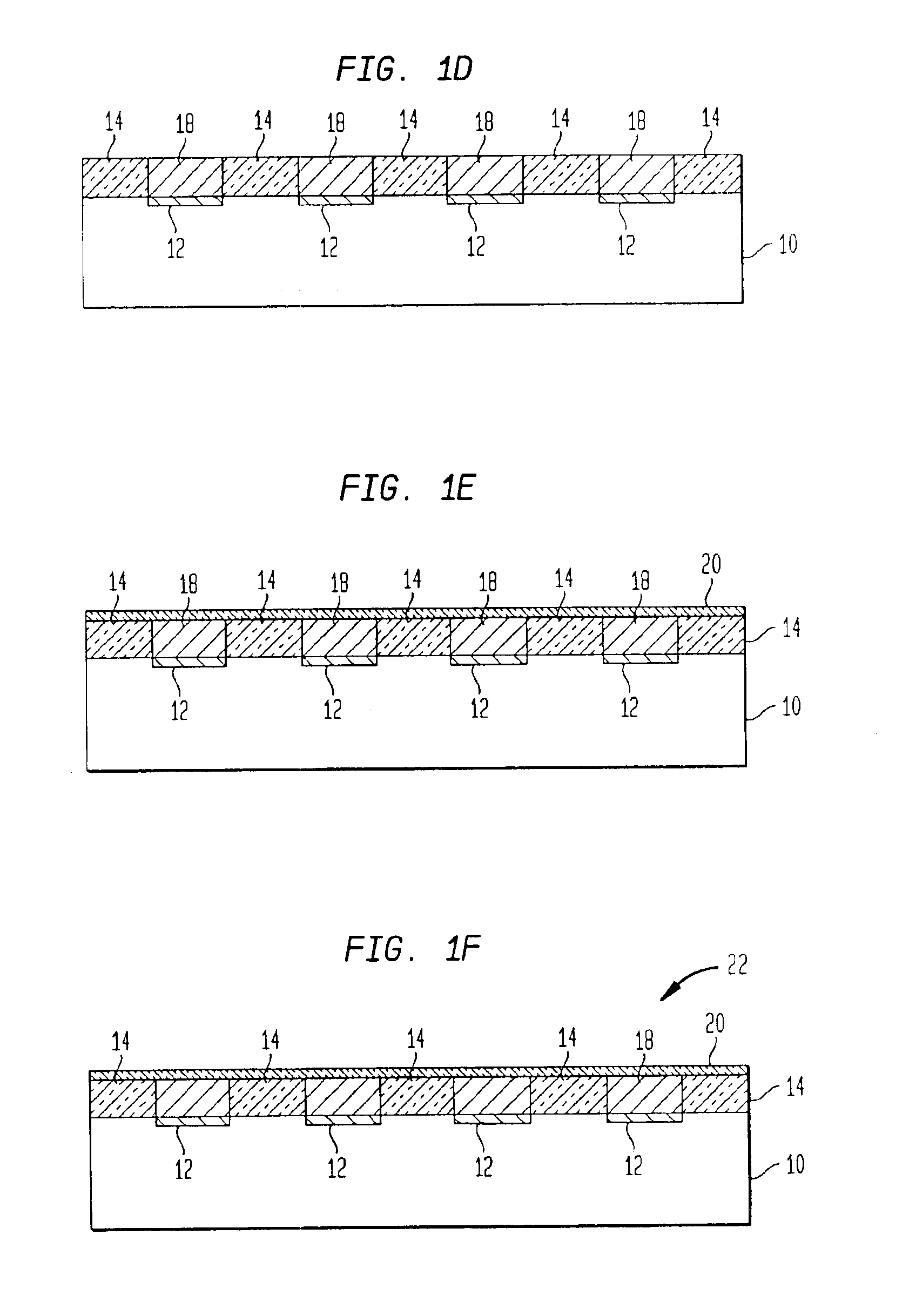Bilayer wafer-level underfill
a technology of bilayer wafers and underfilling, which is applied in the direction of semiconductor devices, semiconductor/solid-state device details, electrical apparatus, etc., can solve the problems of increasing the fatigue life of the solder bump, and affecting the quality of the finished produ
- Summary
- Abstract
- Description
- Claims
- Application Information
AI Technical Summary
Benefits of technology
Problems solved by technology
Method used
Image
Examples
Embodiment Construction
[0035]The present invention which provides a microelectronic interconnect structure and a method of fabricating the same will now be described in more detail by referring to the drawings that accompany the present application. It is noted that in these drawings, like and / or corresponding elements are referred to by like reference numerals.
[0036]Reference is first made to FIG. 1A which illustrates an initial structure that can be employed in the present invention. Specifically, the initial structure shown in FIG. 1A comprises semiconductor wafer 10 having interconnect pads 12 formed on predetermined portions of the wafer. The structure shown in FIG. 1A is comprised of conventional materials well known to those skilled in the art and conventional processing steps are used in fabricating the same.
[0037]For example, semiconductor wafer 10 is comprised of a semiconducting material including, but not limited to: Si, Ge, SiGe, GaAs, InAs, InP and all other II / V compound semiconductors. The...
PUM
 Login to View More
Login to View More Abstract
Description
Claims
Application Information
 Login to View More
Login to View More - R&D
- Intellectual Property
- Life Sciences
- Materials
- Tech Scout
- Unparalleled Data Quality
- Higher Quality Content
- 60% Fewer Hallucinations
Browse by: Latest US Patents, China's latest patents, Technical Efficacy Thesaurus, Application Domain, Technology Topic, Popular Technical Reports.
© 2025 PatSnap. All rights reserved.Legal|Privacy policy|Modern Slavery Act Transparency Statement|Sitemap|About US| Contact US: help@patsnap.com



